Design of the new bicycle lines in Tokyo
Cycling lanes and infrastructure is popping up all over Tokyo at an alarming rate. Although it is both surprising and encouraging to see such high levels of commitment for implementing bicycle lanes around the city, poor design is causing what could be one of the best cycling infastructures in the world a wasted opurtunity. Here, Tokyo native Byron Kidd gives you a round up of some of the cycling lanes you’ll find around Tokyo.
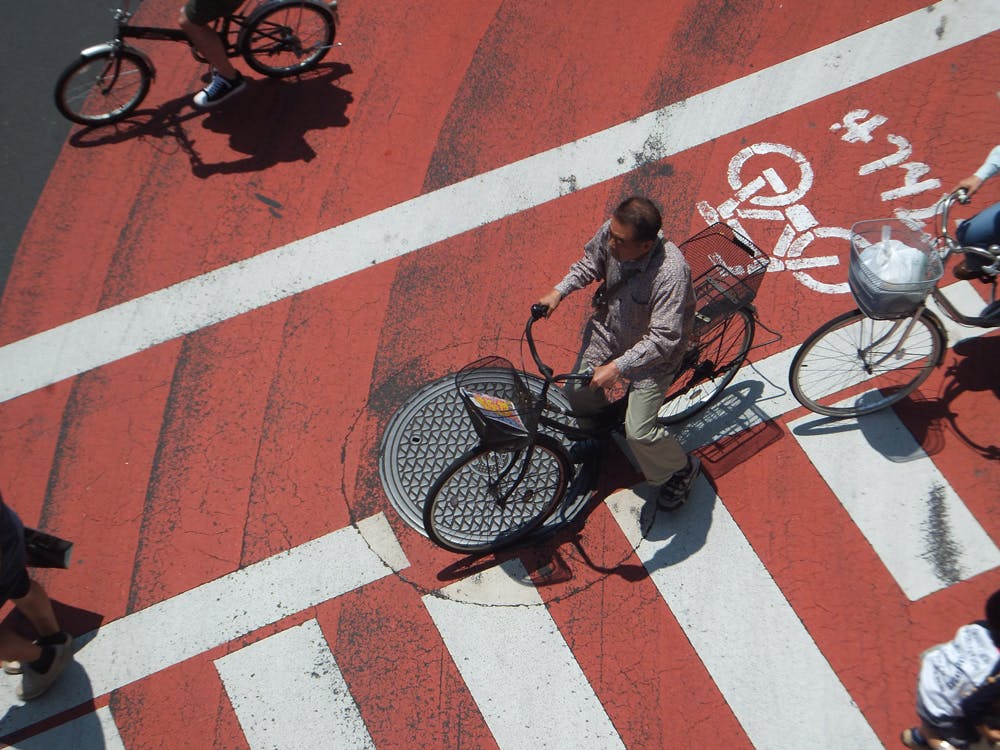
Tokyo Bay
The crown jewel of Tokyo’s cycling infrastructure undoubtedly has to be the islands of Tokyo bay. Currently under redevelopment to host the 2020 Olympic Games, Tokyo Governor Masuzoe Yoichi has pledged to make the area more friendly to cyclists by including cycling infrastructure in the redevelopment plans right from the start. But will this opportunity be wasted on bad design?
The new lanes, situated at sidewalk level, are smooth and a pleasure to ride. That is until one notices they’re bidirectional and by so too narrow for them to be practical. Rather than making cycling safer and more comfortable, cycling these lanes can be a stressful and potential dangerous experience.
According to a source close to the minister responsible for transport at the 2020 Olympic Games, the lanes currently in place are temporary and the final design has yet to be finalised. On the other hand, it is easy to imagine that the lanes will prove to be permanent, as they are strikingly similar to the new permanent bicycle lanes located at the newly redeveloped Shintora Doori near Toranamon Hills.
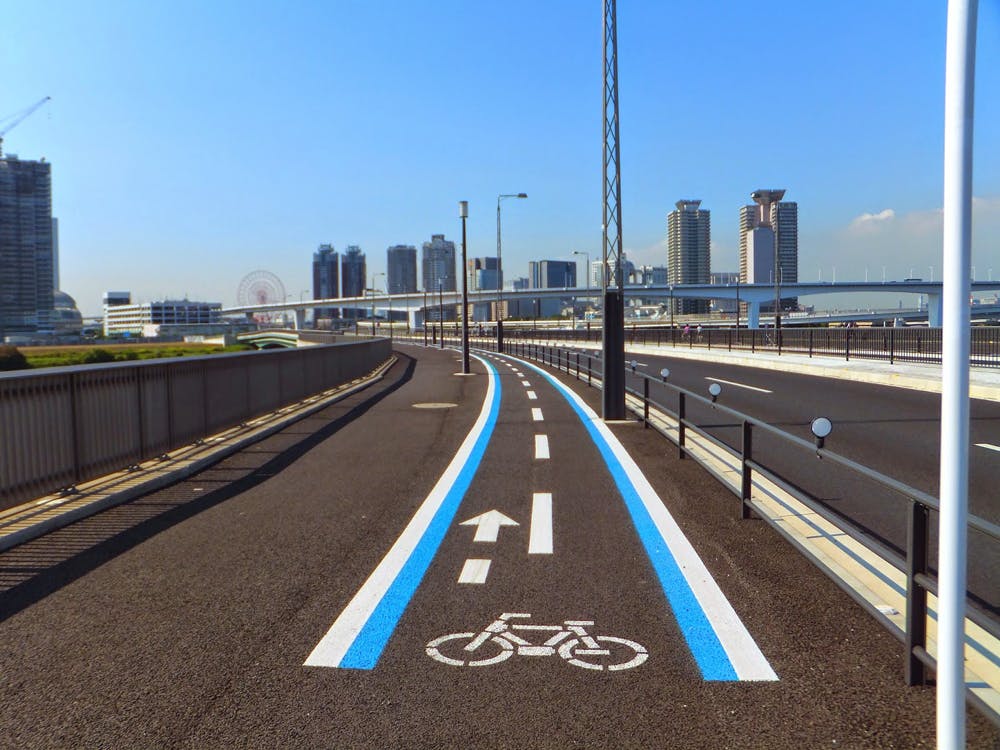
Shintora Dori
Seemingly the Tokyo Metropolitan Goverment’s strategy towards cycling infrastructure is to take advantage of redevelopment projects in order to widen sidewalks and implement sidewalk level bicycle lanes. The redevelopment in Toranamon, including the new Toranamon Hills complex, gave officials the perfect opportunity to place bicycle lanes on both sides of Shintora Dori.
The redevelopment planning started decades ago, with bicycle lanes being a late addition. Similar to the lanes on the islands of Tokyo Bay they are located at sidewalk level, separated from the road by barriers and from pedestrians by both green areas and barriers.
Just as the lanes on the islands of Tokyo Bay the lanes are bidirectional, once again making the width of the lanes unsuitable for large crowds of cyclists. This leads to potential dangerous situations as some choose to use the much wider sidewalks instead of the provided lanes.
While using green areas to separate cyclists and pedestrians is a wonderful idea, providing both separation and a splash of colour and life to an otherwise concrete wasteland, they currently contribute little to keeping pedestrians out of the cycle lanes. The lanes also disappear meters before pedestrian crossings and magically re-appear meters after, causing pedestrians and cyclists to mix uncontrolled at intersections.
Even more alarming: Although the lanes have only been open for a few months, sections have already been removed in order to allow motorists easier access to parking. If this is the future of Tokyo’s cycling infrastructure, you will find us riding in the streets.
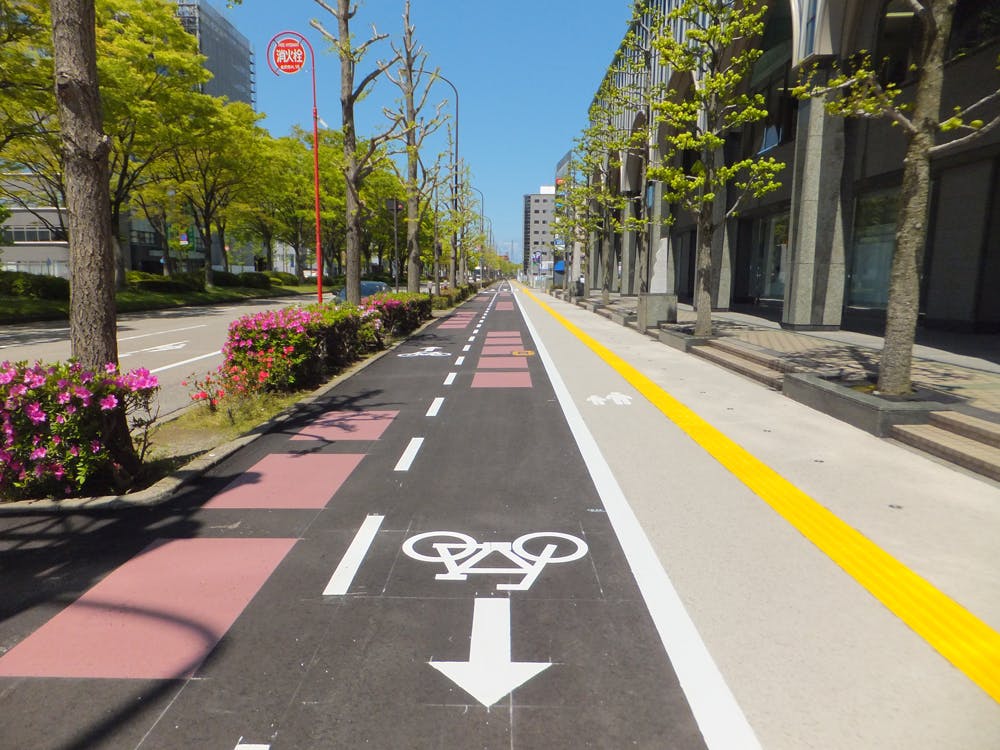
Yamate Dori
Another redevelopment project that has been underway for decades is Tokyo’s inner ring road Yamate Dori. Here the bicycle lanes are located at sidewalk level on either side of the road. They are of a different, and possibly much older design than the lanes of Tokyo Bay and Shitora Dori: Separated from the road by barriers and lush green gardens, these lanes feature no centre line or directional markings, making them appear wider than lanes elsewhere in the city.
A physical barrier does not separate pedestrians and cyclists. Instead the pavement stones of the pedestrian and cycling areas are of a slightly different colour and the barrier is marked with a stripe of white paint. Needless to say, the bicycle lane is often filled with pedestrians and cyclists commonly use the lane for pedestrians.
As the areas of Yamate Dori have no on street parking, motorists often take advantage of the wide sidewalks for a quick parking stop – making the environment dangerous for both pedestrians and cyclists alike. These lanes not only disappear at pedestrian crossings, forcing pedestrians and cyclists to mix. They also disappear at bus stops and random driveways, including those of gas stations and convenience stores. This, combined with the width of the lanes and lack of separation from pedestrians, makes using the lanes little different from using the sidewalk.
It is a shame that more thought haven’t been put into the design of the bicycle lanes on Yamate Dori. Instead, the seemingly commitment to bring world-class infrastructure to Tokyo by implement bicycle infrastructure from the start of a project, has turned into a wasted opportunity.
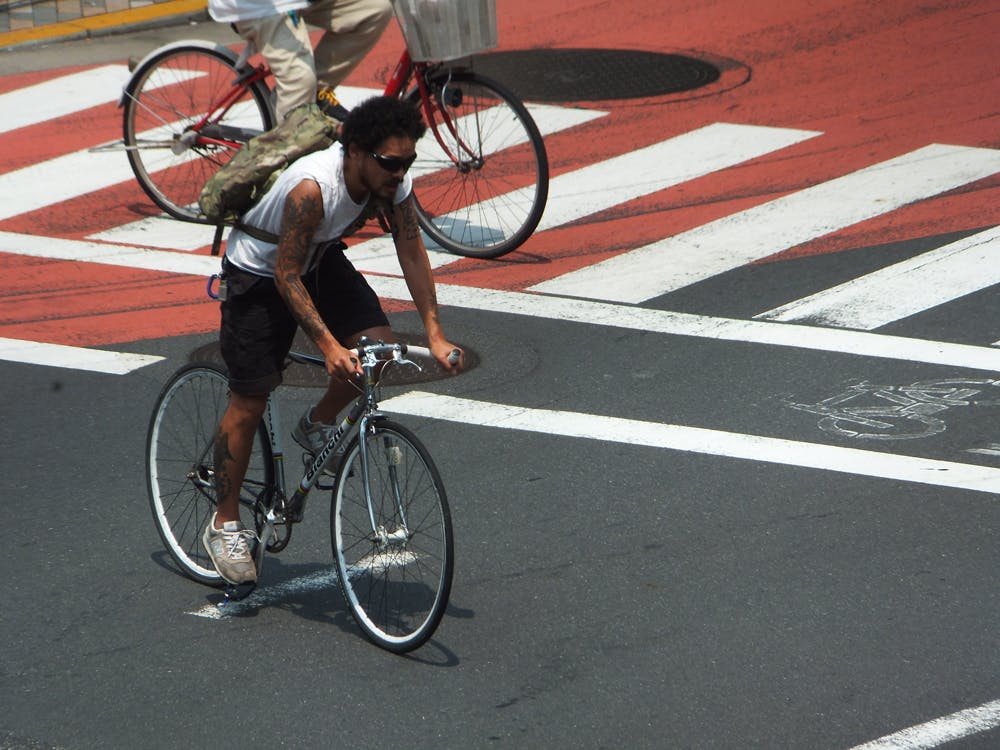
Suido Doro
Tokyo’s Route 20 runs from the western suburbs of Tokyo to Shinjuku. In addition to being notoriously busy and dangerous, much of the route is overshadowed by an expressway that traps pollution and noise on street level, causing the cycling experience to be far from enjoyable.
However, running alongside Route 20 is Suido Doro, a long, straight and flat section of road that offers a much better cycling experience. In an effort to lure commuter cyclists off Route 20 at peak traffic times, the Tokyo Metropolitan Government have painted bicycle lanes on either side of Sudo Doro.
A valiant effort, but as we all know, painted lanes offer cyclists little protection and actually make cycling more dangerous when they’re littered with parked vehicles as the lanes of Suido Doro often are. A few hundred meters before reaching the cycling infrastructure of Yamate Dori, the lanes come to an inexplicably and sudden end, leaving the cyclists the option of continuing on the unpainted road surface or heading onto the narrow sidewalks.
If Tokyo wants to encourage bicycle commuting, it need to focus on creating safe and well-working cycling lanes from the suburbs to the city.
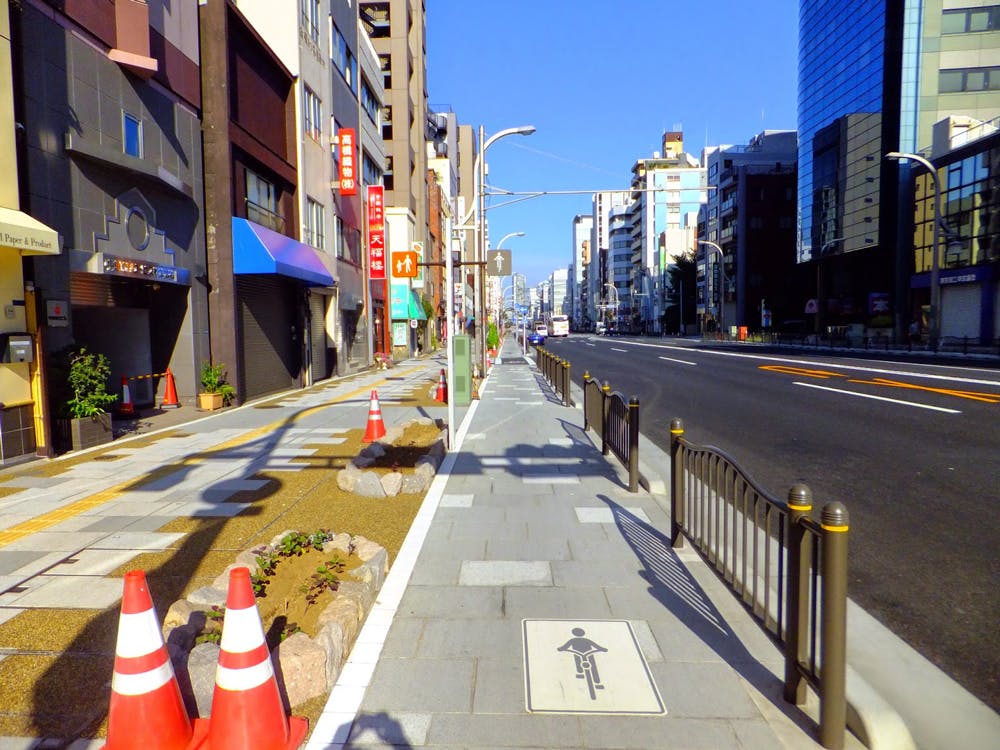
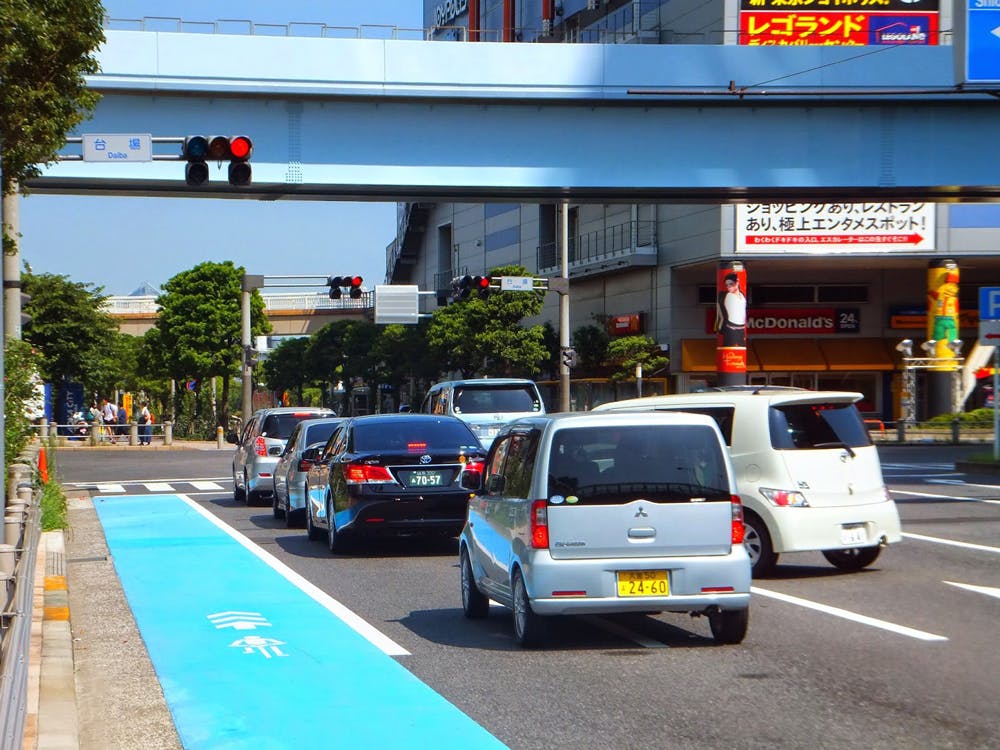
Asakusa Dori
Stretching from Ueno to Asakusa, Asakusa Dori is a surprising new bicycle lane development. Separated from the road by a fence, and from pedestrians by delightful gardens and planter boxes, this lane is a pleasure to ride. However it suffers from the same failings that characterize all sidewalk level bicycle lanes in Tokyo: The lane disappears at intersections and the green areas do little to keep pedestrians out of the bicycle lane.
While there are no directional markings on these lanes, the nature of Japanese sidewalk cycling dictates that the lanes are used bidirectional. The lanes are not perfect. Nevertheless, as the district is popular amongst tourists and known for its cheep bicycle hire scheme, they are most welcome in Asakusa.
Shinjuku Dori
A line painted down the middle of a sidewalk does not create a bicycle lane. Not only does this make the lane too narrow: it does not take into account recycling bins that tend to litter the streets on garbage day, telegraph poles, phone boxes and other obstacles. We recommend not thinking of the lanes as bicycle lanes, but rather a reminder for cyclists to stick to the roadside of the sidewalks.
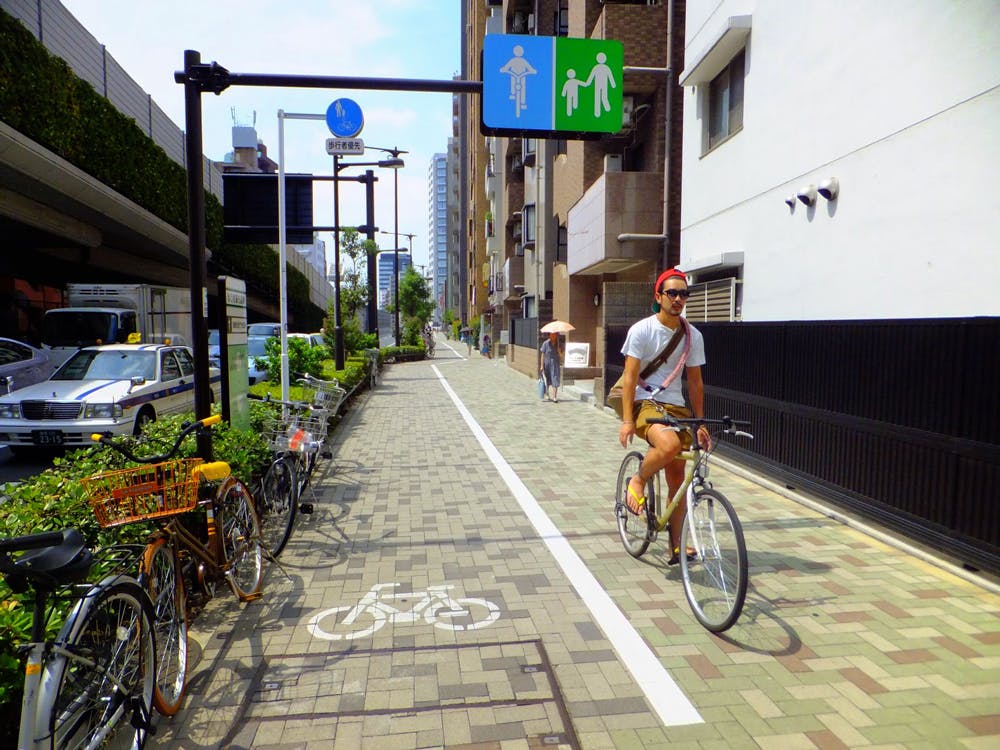
Conclusion
It is encouraging to see the efforts being made around Tokyo to implement cycling infrastructure to the city. Yet, the designs are less than ideal. The fact that an effort is being made is truly wonderful, but without good design and coordination between all the responsible municipalities, the opportunity to implement a world class cycling infrastructure will disappear.
The effort to accommodate cyclists around the city, and the mere fact that cycling is on the Governors agenda, is exciting. However, it would do Tokyo good to look abroad and study how other cities implement cycling lanes. Because – when Tokyo finally cracks the code on how to create a well-working cycling infrastructure, it will rapidly become one of the most bicycle friendly cities in the world.